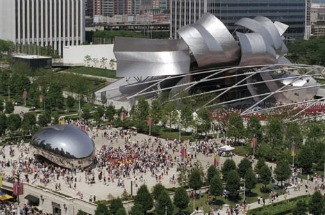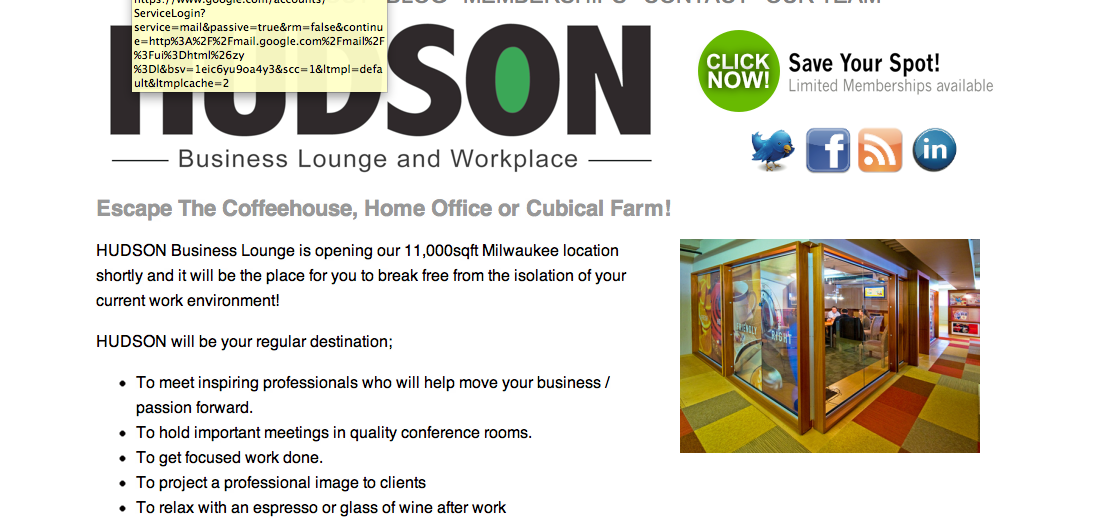 Written by Bill Loumpouridis, CEO of EDL Consulting The great contemporary architect Frank Gehry has built a reputation by challenging our core beliefs around what buildings should look like as well as the very role of design. His work is often described as “Deconstructivist,” meaning that he reduces his creations to be more of a reflection of the tension that binds atomic elements as opposed to the singular “harmonic” whole of a Frank Lloyd Wright conception. Gehry has established an entirely new paradigm for architecture – one that is enabled by the most modern construction materials and techniques. His buildings, which would have been impossible to construct a generation ago, have given us a new way to appreciate architecture. Frank Lloyd Wright’s Prairie School architecture has proven to be timeless in both form and function. His buildings have withstood the test of time, and – in contrast to the work of his contemporaries – strike us as “modern” a century after their conception. Adopting the new paradigm of a cloud-centric application architecture provides a once-in-a-generation opportunity to re-architect how an organization serves both internal and external constituents. In terms of customer relationship management (CRM), it allows for unparalleled customer-centricity. In operational terms, the cloud offers an extraordinary opportunity to “get lean” by consolidating disparate systems into a single elastic record for product, pricing and customer data. Achieving the full potential of the cloud paradigm shift requires vision, courage and expert execution. I have seen this firsthand in EDL’s most recent implementations of our CloudCraze eCommerce service, which is developed exclusively in the cloud and gives any organization the power of rapidly deployed, infinitely-scalable eCommerce capabilities. By embracing cloud computing, companies benefit from an application architecture that harnesses the potential of new capabilities like a Gehry while delivering the efficiency and elegance of a Wright. What Does Architecture Represent? Semantics play a powerful and important role in our projects. The terms “portal,” “CRM” and even “customer” (versus end user or channel partner) can have widely divergent meanings. Thus, every new project requires an early level-set on definitions for these and other relativistic terms. Similarly, the term “architecture” means different things to different people. In my experience, when someone is talking about architecture they are really talking about one of three things: business architecture, applications architecture or systems architecture. For example, the business architecture defines how a value proposition is developed and delivered within a product or service’s ecosystem. The business architecture also drives how the functional groups responsible for delivering that product or service to market interact to support business processes. Applications architecture defines the primary automated systems that support business processes, such as marketing, sales and customer support. This architecture also rationalizes where certain core functionality resides. For example, inventory management functions may reside in CRM, eCommerce or accounting systems as well as in standalone systems, depending upon the architecture being supported. Lastly, systems architecture describes both how and when systems communicate with each other, and what business rules are enforced by this architecture. Sound complicated? It can be, especially when a legacy business is involved. These businesses commonly employ a tangle of business processes cobbled together over time as a workaround for inflexible and sometimes poorly implemented legacy systems. Enter the genius of cloud computing. Cloud offers a generational opportunity to reconsider not just systems but the entire business architecture. Why? Because our experience has shown that cloud-based systems shatter the barriers for systems deployment as we have known them by eliminating long-held assumptions about system constraints. I have seen enterprise resource planning (ERP) systems deployments that take longer than the typical college education, but all of our cloud deployments have taken less than four months. Using cloud-based architecture, the ways in which a company goes to market can be completely transformed in under four months, leaving it far more nimble and much more capable of experimenting with new ways of going to market and promoting products and services. Ultimately, this is only possible when cloud computing is fully embraced within the context of business, applications and systems re-architecture. Embracing the possibilities means re-inventing, discarding assumptions and embracing change. For those that do, the real promise of cloud computing awaits. Finding Common Ground New technologies have enabled breakthrough designs in construction that have allowed the whimsical musings of an architect like Frank Gehry to be turned into inspiring sweeps of creativity. In the same manner, cloud computing enables entirely new ways of approaching how automated systems are constructed and, more importantly, how these systems interact with one another. One exciting development that has occurred in parallel with the rise of cloud computing is the advent of “open” systems, which have come to replace the closed architectures that dominated previous technological eras. Open systems allow business applications to freely exchange data using commonly accepted protocols. As the practice of interconnecting systems became more commonplace, the idea of moving past one-to-one connections to interdependent networked computing took hold. These open-systems capabilities are what allow various “clouds” to coexist and form ecosystems. This is how eBay has created an ecosystem around its auction platform, leveraging PayPal and other payment transaction gateways. Amazon and Google “rent” their cloud to other application vendors, forming other ecosystems. Facebook, Foursquare and Zynga all share interdependent fates in the “social cloud.” Even hardware companies depend on open-systems capabilities. Nokia’s new CEO was recently quoted as saying the key to the company’s survival was to either create a new ecosystem or join an existing one. The ecosystem that Apple has been able to construct resembles a city comprised of Frank Gehry buildings — each of them unique, yet sharing a common aesthetic. Of course, the overarching unifying principle of the Apple ecosystem is really a matter of form following function — the triumph of the user experience as the ultimate arbiter of mass acceptance. Frank Lloyd Wright would have been proud. As with many emerging technology trends, we are only scratching the potential of cloud computing. Ultimately, my belief is that the most powerful way to leverage this technology centers on the ability it gives us to form new ecosystems quickly and easily. Those who will prosper will have both the vision of Frank Gehry and the courage, tenacity and bold execution of Frank Lloyd Wright. Cloud computing delivers the “right” balance of technology enablement, timing and execution to create the ecosystems of the future.
Written by Bill Loumpouridis, CEO of EDL Consulting The great contemporary architect Frank Gehry has built a reputation by challenging our core beliefs around what buildings should look like as well as the very role of design. His work is often described as “Deconstructivist,” meaning that he reduces his creations to be more of a reflection of the tension that binds atomic elements as opposed to the singular “harmonic” whole of a Frank Lloyd Wright conception. Gehry has established an entirely new paradigm for architecture – one that is enabled by the most modern construction materials and techniques. His buildings, which would have been impossible to construct a generation ago, have given us a new way to appreciate architecture. Frank Lloyd Wright’s Prairie School architecture has proven to be timeless in both form and function. His buildings have withstood the test of time, and – in contrast to the work of his contemporaries – strike us as “modern” a century after their conception. Adopting the new paradigm of a cloud-centric application architecture provides a once-in-a-generation opportunity to re-architect how an organization serves both internal and external constituents. In terms of customer relationship management (CRM), it allows for unparalleled customer-centricity. In operational terms, the cloud offers an extraordinary opportunity to “get lean” by consolidating disparate systems into a single elastic record for product, pricing and customer data. Achieving the full potential of the cloud paradigm shift requires vision, courage and expert execution. I have seen this firsthand in EDL’s most recent implementations of our CloudCraze eCommerce service, which is developed exclusively in the cloud and gives any organization the power of rapidly deployed, infinitely-scalable eCommerce capabilities. By embracing cloud computing, companies benefit from an application architecture that harnesses the potential of new capabilities like a Gehry while delivering the efficiency and elegance of a Wright. What Does Architecture Represent? Semantics play a powerful and important role in our projects. The terms “portal,” “CRM” and even “customer” (versus end user or channel partner) can have widely divergent meanings. Thus, every new project requires an early level-set on definitions for these and other relativistic terms. Similarly, the term “architecture” means different things to different people. In my experience, when someone is talking about architecture they are really talking about one of three things: business architecture, applications architecture or systems architecture. For example, the business architecture defines how a value proposition is developed and delivered within a product or service’s ecosystem. The business architecture also drives how the functional groups responsible for delivering that product or service to market interact to support business processes. Applications architecture defines the primary automated systems that support business processes, such as marketing, sales and customer support. This architecture also rationalizes where certain core functionality resides. For example, inventory management functions may reside in CRM, eCommerce or accounting systems as well as in standalone systems, depending upon the architecture being supported. Lastly, systems architecture describes both how and when systems communicate with each other, and what business rules are enforced by this architecture. Sound complicated? It can be, especially when a legacy business is involved. These businesses commonly employ a tangle of business processes cobbled together over time as a workaround for inflexible and sometimes poorly implemented legacy systems. Enter the genius of cloud computing. Cloud offers a generational opportunity to reconsider not just systems but the entire business architecture. Why? Because our experience has shown that cloud-based systems shatter the barriers for systems deployment as we have known them by eliminating long-held assumptions about system constraints. I have seen enterprise resource planning (ERP) systems deployments that take longer than the typical college education, but all of our cloud deployments have taken less than four months. Using cloud-based architecture, the ways in which a company goes to market can be completely transformed in under four months, leaving it far more nimble and much more capable of experimenting with new ways of going to market and promoting products and services. Ultimately, this is only possible when cloud computing is fully embraced within the context of business, applications and systems re-architecture. Embracing the possibilities means re-inventing, discarding assumptions and embracing change. For those that do, the real promise of cloud computing awaits. Finding Common Ground New technologies have enabled breakthrough designs in construction that have allowed the whimsical musings of an architect like Frank Gehry to be turned into inspiring sweeps of creativity. In the same manner, cloud computing enables entirely new ways of approaching how automated systems are constructed and, more importantly, how these systems interact with one another. One exciting development that has occurred in parallel with the rise of cloud computing is the advent of “open” systems, which have come to replace the closed architectures that dominated previous technological eras. Open systems allow business applications to freely exchange data using commonly accepted protocols. As the practice of interconnecting systems became more commonplace, the idea of moving past one-to-one connections to interdependent networked computing took hold. These open-systems capabilities are what allow various “clouds” to coexist and form ecosystems. This is how eBay has created an ecosystem around its auction platform, leveraging PayPal and other payment transaction gateways. Amazon and Google “rent” their cloud to other application vendors, forming other ecosystems. Facebook, Foursquare and Zynga all share interdependent fates in the “social cloud.” Even hardware companies depend on open-systems capabilities. Nokia’s new CEO was recently quoted as saying the key to the company’s survival was to either create a new ecosystem or join an existing one. The ecosystem that Apple has been able to construct resembles a city comprised of Frank Gehry buildings — each of them unique, yet sharing a common aesthetic. Of course, the overarching unifying principle of the Apple ecosystem is really a matter of form following function — the triumph of the user experience as the ultimate arbiter of mass acceptance. Frank Lloyd Wright would have been proud. As with many emerging technology trends, we are only scratching the potential of cloud computing. Ultimately, my belief is that the most powerful way to leverage this technology centers on the ability it gives us to form new ecosystems quickly and easily. Those who will prosper will have both the vision of Frank Gehry and the courage, tenacity and bold execution of Frank Lloyd Wright. Cloud computing delivers the “right” balance of technology enablement, timing and execution to create the ecosystems of the future.  Bill Loumpouridis is a self-described “serial entrepreneur,” and has thrived over the course of more than two decades by embracing the leading edge of change and zigging when the other guys are zagging. He founded EDL in 2001 in response to the dot.com implosion, recognizing that companies would continue to use the Web as one of a range of sales channels. EDL’s latest product is CloudCraze, which harnesses EDL’s legacy of eCommerce best-practices and delivered this as end-user, best-in-class application on force.com.
Bill Loumpouridis is a self-described “serial entrepreneur,” and has thrived over the course of more than two decades by embracing the leading edge of change and zigging when the other guys are zagging. He founded EDL in 2001 in response to the dot.com implosion, recognizing that companies would continue to use the Web as one of a range of sales channels. EDL’s latest product is CloudCraze, which harnesses EDL’s legacy of eCommerce best-practices and delivered this as end-user, best-in-class application on force.com.
CEO Sundays: “Frank” Talk About Cloud Architecture
By Techli
6 marzo, 2011









